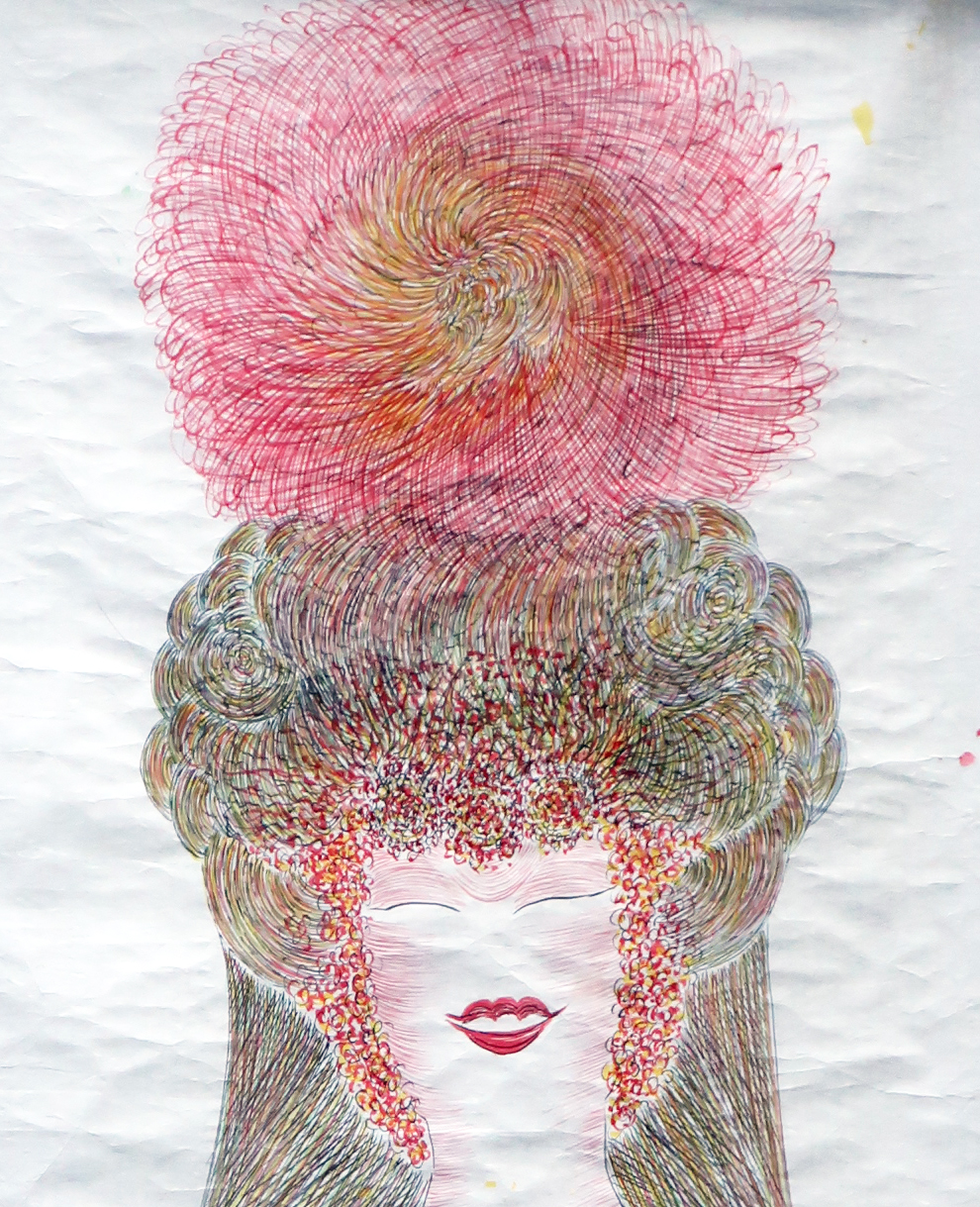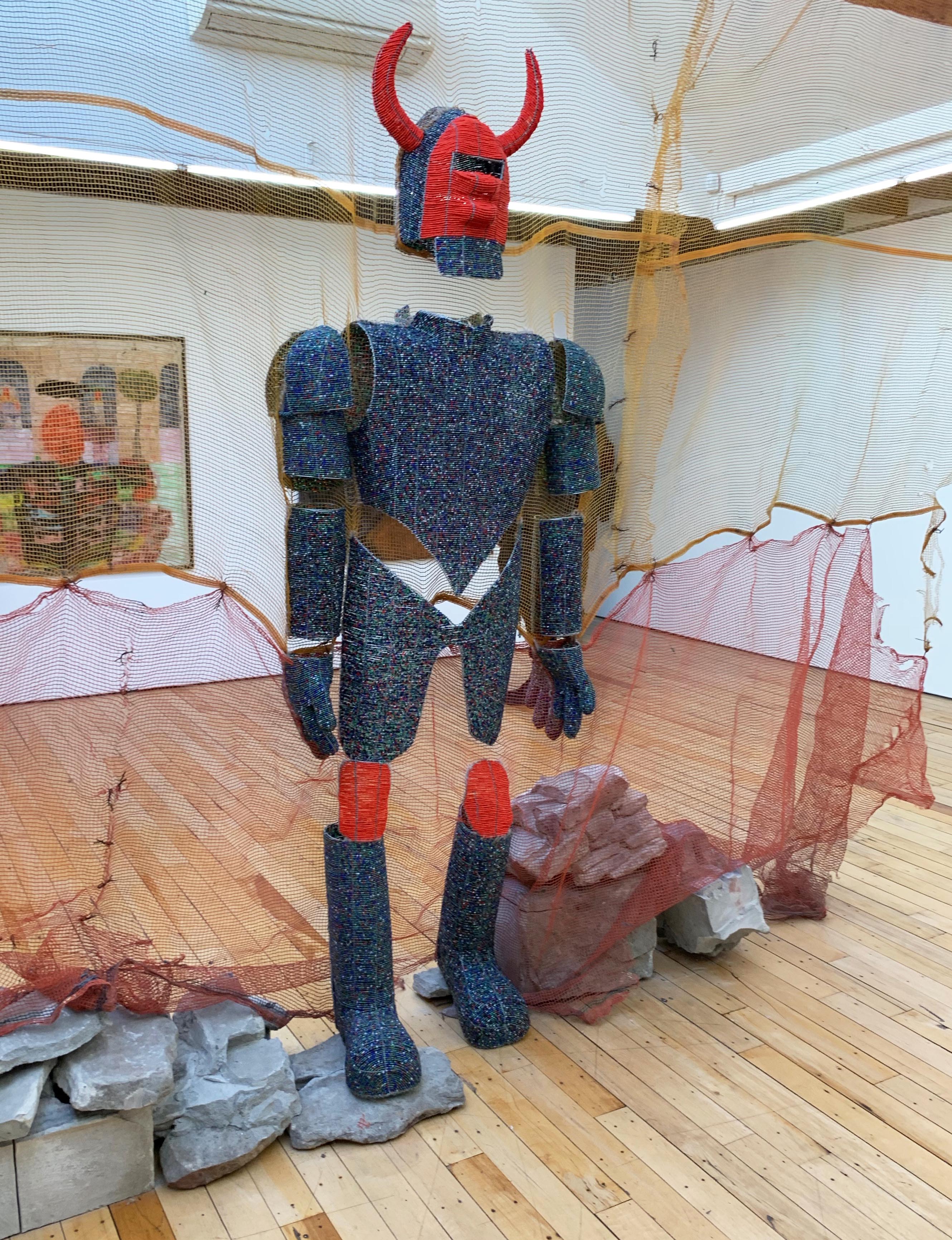Near the entrance to the Drawing Center’s retrospective of work by late Belgian artist Stephane Mandelbaum hangs a diverse selection of portraits, arresting in their distortions and expressive immediacy, that signal his complex and conflicted experience of the aftermath of WWII. A drawing of Francis Bacon, known for painting distorted figures reflecting collective horror at the atrocities of the war, hangs next to a portrait of Bacon’s criminally connected lover, George Dyer, which in turn is close to a portrait of embattled Nazi paramilitary leader Ernst Rohm. Giving voice to a disturbing constellation of ideas via texts in Yiddish, French, Italian and German and pornographic imagery, the drawings explore the artist’s obsessions with sex and power which extend into his family life. Under the portrait of Bacon pictured here is an almost totally obscured drawing of Mandelbaum’s father, artist and professor Arie Mandelbaum, visible just as a predella, a platform on which an altar would be placed. (On view in SoHo through Feb 18th).




